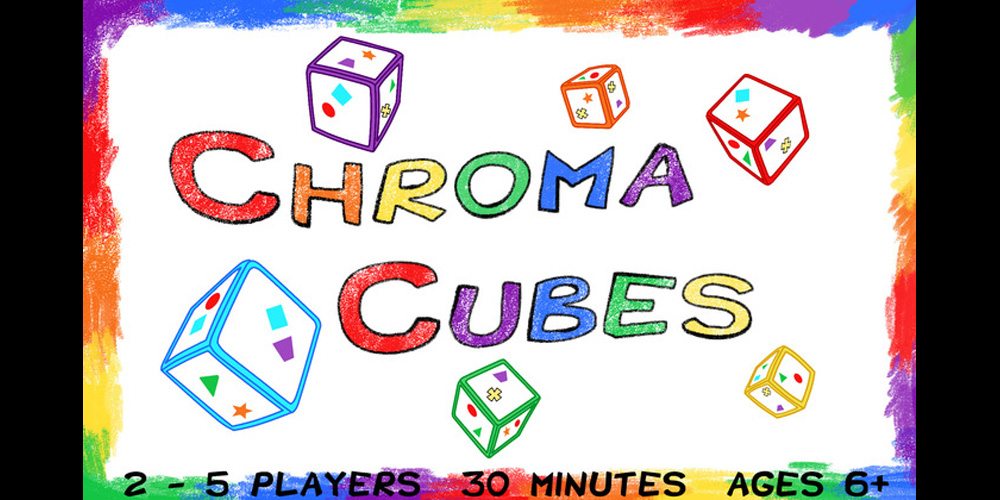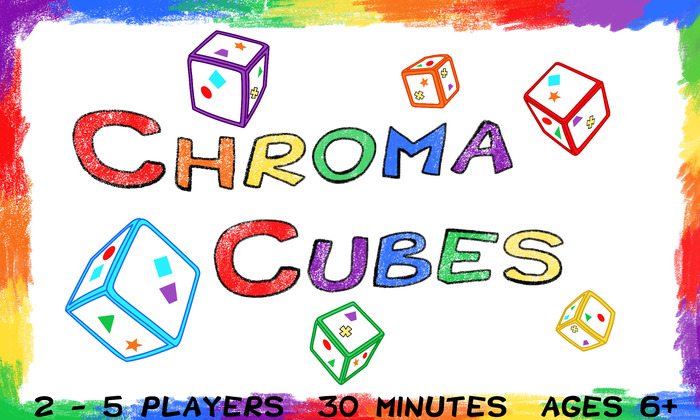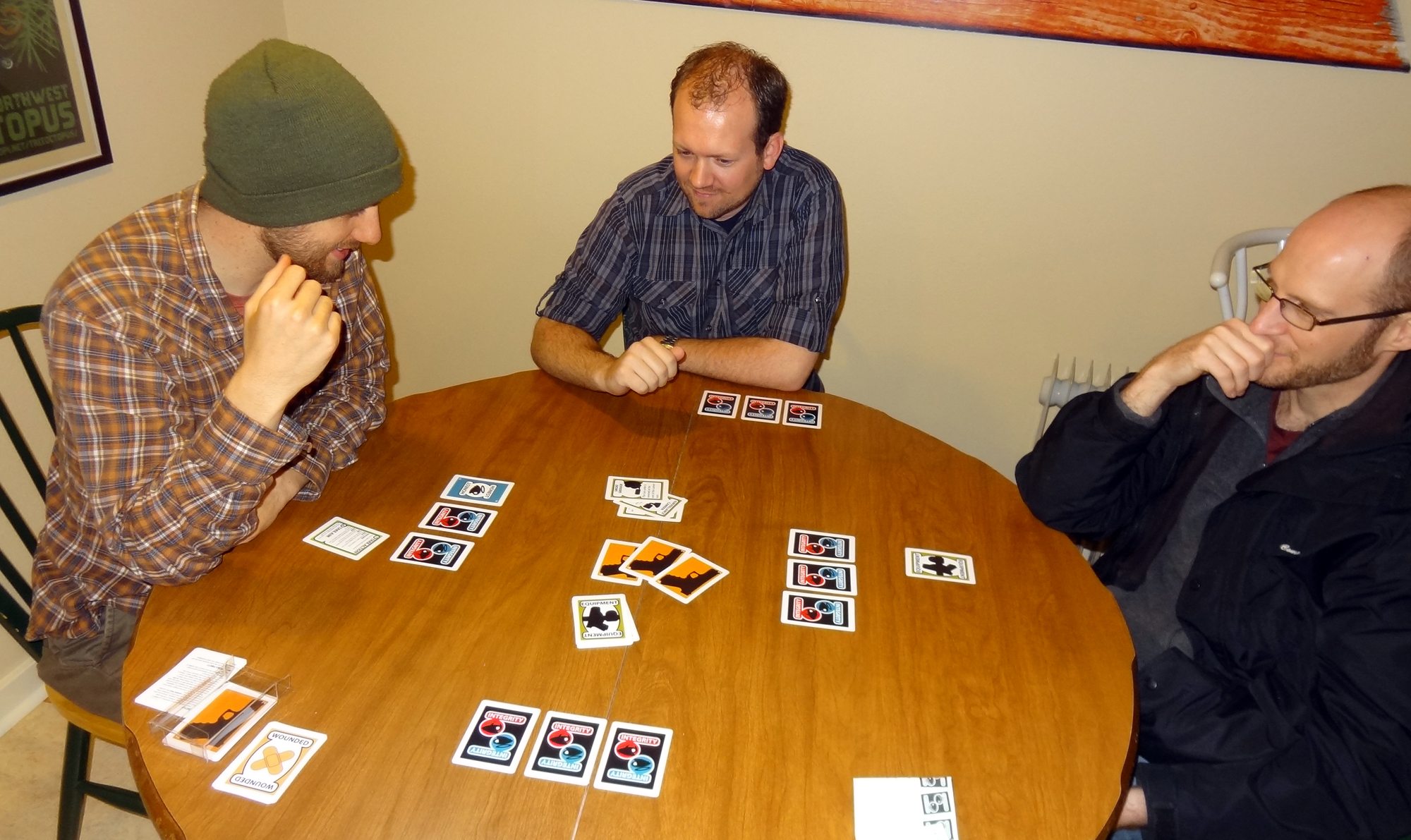Yep, you read that right. Competitive coloring. With dice, even. Chroma Cubes is a cute-looking game by Charles Beauvais that’s been making a splash at conventions. Beauvais was selling sets on his own, but got picked up by 5th Street Games and just launched on Kickstarter for a professionally-produced version.
At a glance: Chroma Cubes is for 2 to 5 players, ages 6 and up, and takes 30-45 minutes to play. Don’t be fooled by that 6+ age rating, though: even though you can play with your kids, this is one that adult gamers can really enjoy, too. Mixing cutthroat adults with 1st graders might be asking for trouble, though. The basic pledge level on Kickstarter for a copy of the game is $25, with additional reward levels for extra art pads or more copies of the game.
New to Kickstarter? Check out our crowdfunding primer.
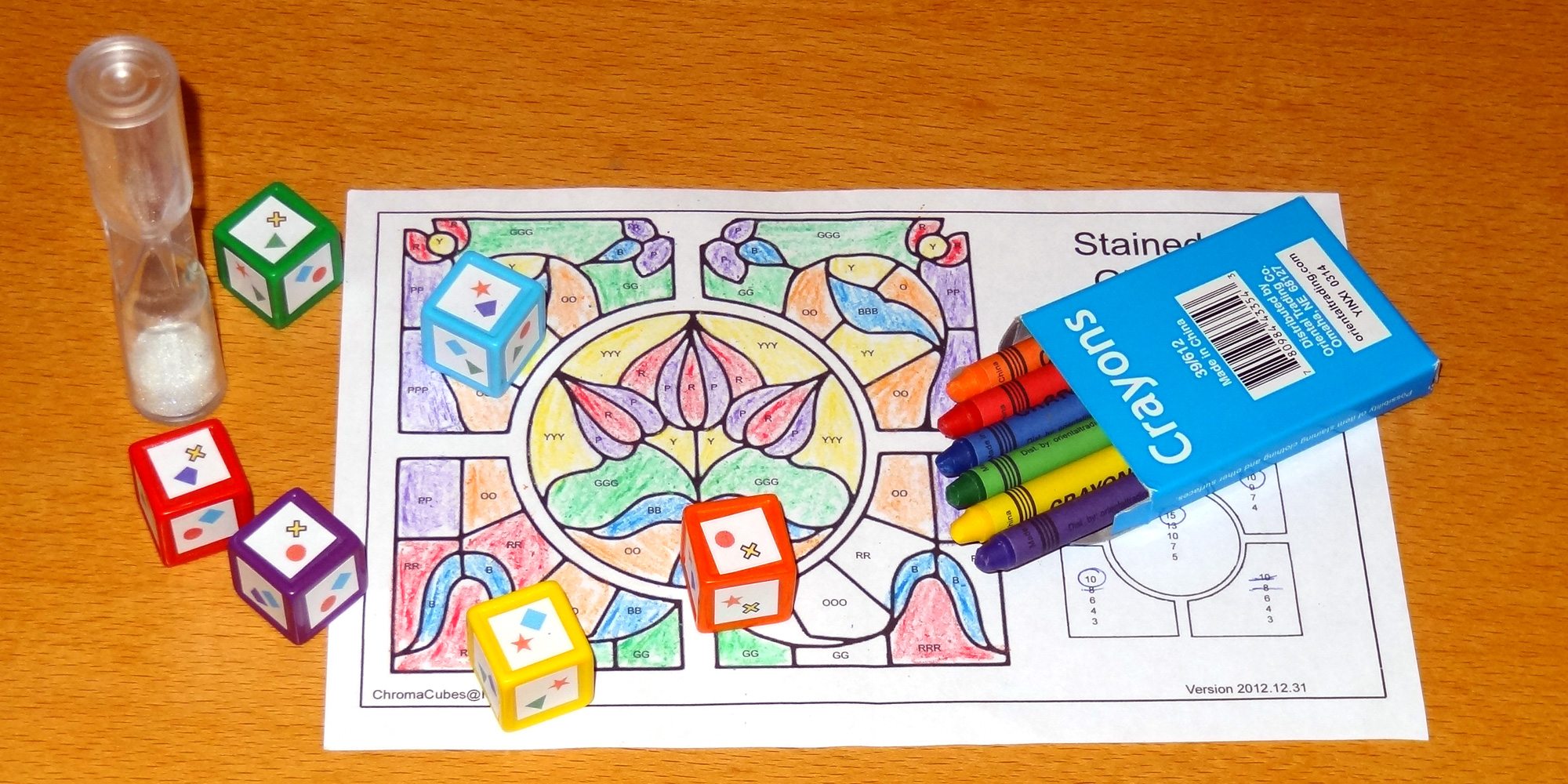
Components
Chroma Cubes comes with:
- 1 30-second sand timer
- 30 custom dice (5 sets of 6 dice)
- 6 crayons
- coloring sheets
My copy is a demo prototype so it’s not final quality, and I know there are some tweaks being made. The crayons in my set are tiny ones, the sort you’d get with a kids’ menu at a restaurant.
The dice will be silkscreened, though my demo prototype uses stickered faces. There’s one die per color (red, orange, yellow, green, blue, purple) and each face has two symbols on it representing various colors. Each color has a unique symbol so that the game is playable even by color blind players or in imperfect lighting situations. For each die, you have a 50% chance of rolling the die’s color plus the two colors next to it on the color wheel, and a 1/6 chance of rolling the other three. For instance, on the red die, you’ve got a 50% chance of rolling red, orange, or purple, but only 1/6 chance of rolling yellow, green, or blue.

There are various coloring pages (also available for download here), and each area is marked with some number of a color: 3 Blue, or 1 Red, or 2 Green, and so on. (Right now the sheets use letters: BBB, R, GG, but the plan is to replace those with symbols matching those on the dice.)
How to play
The rules for Chroma Cubes are available as a PDF here.
The goal of the game is to score the most points by completing figures on your coloring sheet before the other players.
Each player gets one set of 6 dice (one of each color) and a coloring sheet. Note that everyone uses the same picture. The timer and crayons are placed in the center where everyone can reach them.
Turns are simultaneous—everyone gets to play at the same time.
At the beginning of each round, everyone rolls their dice. (The first round, you roll all of them; later, you’ll only roll dice that you’ve actually used.)
Then, you may trade dice with other players—one for one. You may only trade dice you haven’t used this round for coloring, and traded dice stay on the face that was rolled this round.
Finally, you use the dice to color in sections of your picture. You may only use one of the two symbols on each die, and to color in a section that shows multiple symbols you must have that many dice with the matching symbol. Any dice you choose not to use are set aside and will not be rolled in the next round.
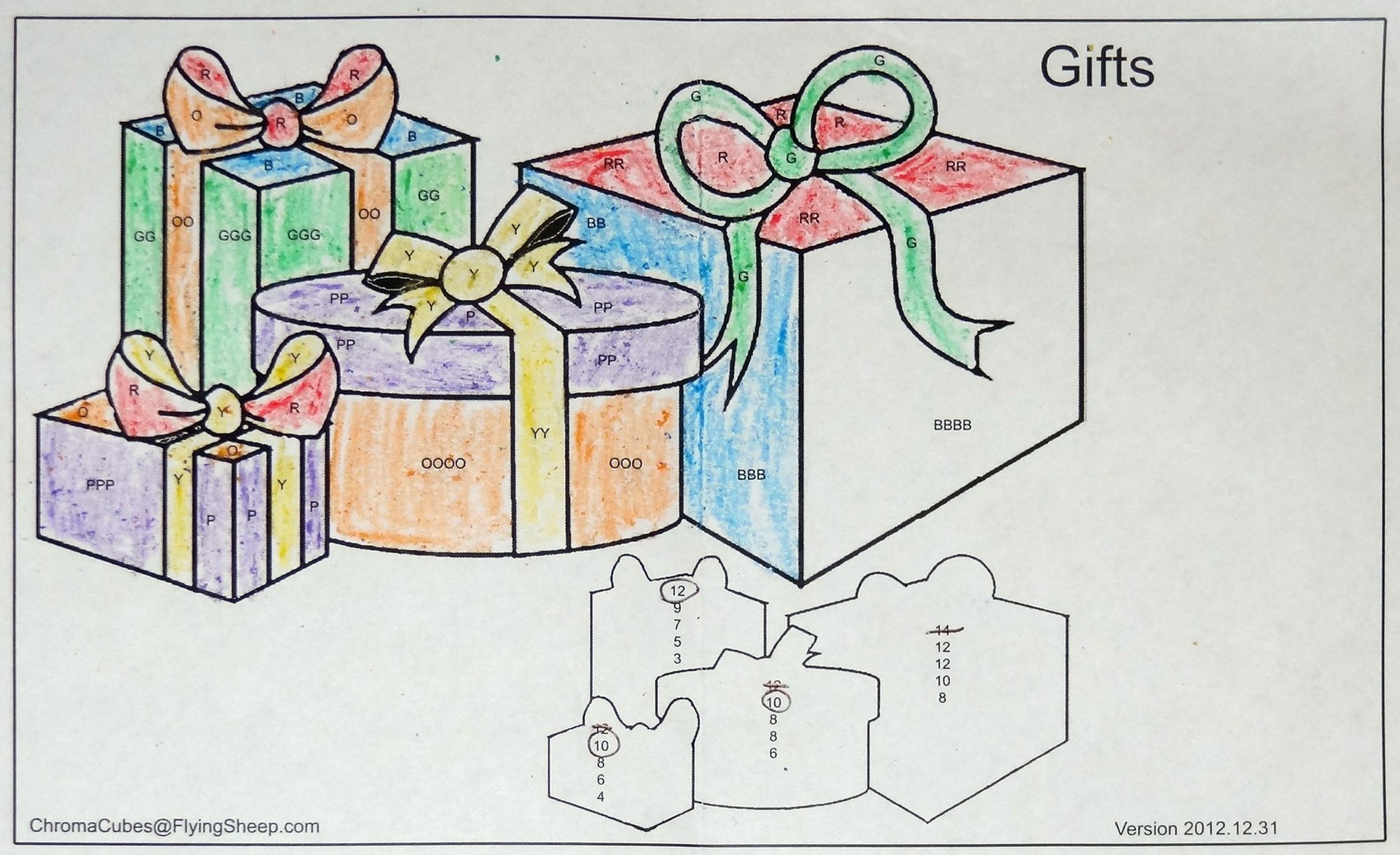
If you finish coloring in one figure on the sheet, then you get to circle the highest score shown for that figure. Everyone else crosses off that score and will get a chance at the next-highest score.
The first player to finish using their dice and coloring during a round may flip the timer. Everyone else has that much time to assign all of their dice to spaces on their coloring sheet, though they don’t necessarily have to finish the actual coloring before the timer runs out. Any dice that aren’t assigned within the 30-second limit will be set aside and not rolled for the next round.
The game ends when a player finishes the entire game sheet or is unable to use any of their dice. That player gets one bonus point for ending the game, and then the player with the highest score wins.

The Verdict
Chroma Cubes is a delightful game. It’s one of those great games that you can play with kids on a fun, casual level, or play with adults at a more strategic level. Granted, it’s not as deep as a heavy Eurogame, but there are some nice subtleties to the game. Plus, hey, coloring in pictures can be oddly satisfying but most of us stop doing it after grade school.
There are two things that together add up to some great choices during play. First is the scoring mechanic: the faster you color in a section of your picture, the more points you get—but you’ll have to decide if it’s worth focusing on those sections (possibly saving up dice for a later turn) or if you want to go with an across-the-board strategy where you just use all of your dice each turn. Some of this depends on what other players are doing. If you see somebody has almost finished a figure, you probably don’t need to rush to fill in that section if you can’t beat them to it.
The other is the color distribution on the dice and the trading mechanic. Each figure has a different distribution of colors needed, and in some instances you’ll need three or even four of the same color just for one area. Knowing that some of the dice give you a 50-50 chance and some give you only 1/6 chance to roll that color, you may need to do some judicious trading to get better dice. But they’re only better for a while—sooner or later, you’re going to need the other colors for another section, and you may regret having traded away all your red dice.
Now, playing with kids I think some of this will go out the window. Depending on their age and experience (and how well they understand the odds), they may just color in the largest areas possible and trade away dice easily without thinking about the consequences. They might even beat you despite having no apparent strategy. It is, after all, a dice game, and probabilities aren’t guarantees.
I’ve had a lot of fun playing Chroma Cubes with my gaming group, and I think it’ll be a hit for gamers of all ages. For younger kids it can serve as a guided activity; for adults it can be a casual game or more cutthroat. And at the end of the game, you’ll have a pretty picture you can stick on the fridge.
For more about Chroma Cubes, check out the Kickstarter page.
Disclosure: GeekDad received a demo prototype of this game for review.
